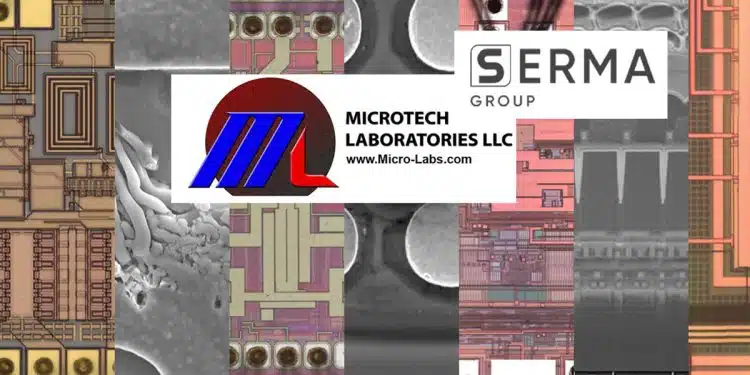The SERMA Group announces its expansion on the North America market with the acquisition of MICROTECH LABORATORIES, an electronics and semiconductor failure analysis laboratory based in Plano, a suburb of Dallas, Texas.
Founded in January 2000, MICROTECH LABORATORIES is an independent laboratory specializing in failure analysis and reverse engineering of semiconductors.
MICROTECH LABORATORIES has highly qualified personnel and state of the art laboratories equipped with high-performance instruments. The company offers a wide range of expert services such as decapsulation or micro sectioning, reverse engineering, schematic extraction, failure analysis and construction of electronic components and printed circuits, as well as associated consulting and training.
The acquisition of MICROTECH LABORATORIES enables SERMA, and in particular its subsidiary SERMA Technologies, to extend geographically its offer of analysis, design and consulting services, which is already firmly established in France with its 6 laboratories in close proximity to its 600 European customers.
This acquisition gives MICROTECH LABORATORIES the opportunity to expand its services offerings on the North America market, drawing in particular on the skills and resources of SERMA Technologies, and to offer its reverse engineering and schematic extraction services in Europe.
By setting up in the United States, SERMA aims to build a solid and growing presence across the Atlantic. Initially, the company aims to become a major local player in the field of electronic analysis laboratories. Subsequently, the SERMA Group intends to take advantage of this move to develop its other businesses: engineering, development and repair of embedded systems, microelectronics design and assembly, characterisation and testing of energy systems, systems safety and reliability.
This acquisition marks a major step forward in the SERMA Group’s international strategic development, enabling it to structure its American branch, which will include MICROTECH LABORATORIES, to serve the American industrial market more effectively and more closely.































